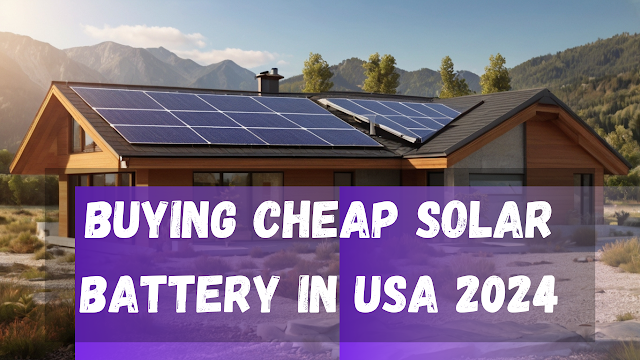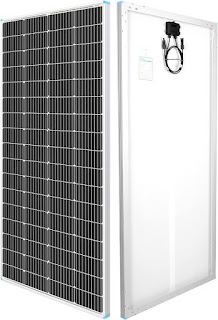The Future of Solar-Powered Electric Vehicles: Trends and Innovations:
Introduction:
As the world shifts towards sustainable energy solutions, solar-powered electric vehicles (EVs) represent the next frontier in green technology. The integration of solar energy with electric mobility is poised to revolutionize the automotive industry, offering a cleaner, more efficient alternative to fossil fuels. This article explores the latest trends and innovations in solar-powered EVs, highlighting how they are shaping the future of transportation.
1. Advances in Solar Panel Technology:
The heart of solar-powered EVs lies in their solar panels. Recent innovations have significantly increased the efficiency and durability of photovoltaic (PV) cells. Modern solar panels can convert sunlight into electricity at higher rates than ever before, making them more viable for powering vehicles. Thin-film solar cells, which are lighter and more flexible than traditional panels, are particularly promising for automotive applications. These advancements are enabling vehicles to harness more energy even in low-light conditions, extending their range and reducing the need for frequent recharging.
2. Solar Integration in Vehicle Design:
Automakers are increasingly designing vehicles with integrated solar panels. From the roof to the hood and even the body panels, every surface of the vehicle can be utilized to capture solar energy. Companies like Lightyear and Sono Motors are leading the charge, with their solar-powered cars capable of driving up to several miles a day solely on solar energy. This integration not only improves the vehicle’s efficiency but also contributes to the overall aesthetic, as sleek, seamless designs are becoming more common.
3. Battery Technology and Energy Storage:
One of the biggest challenges for solar-powered EVs is efficient energy storage. However, advancements in battery technology are addressing this issue. Solid-state batteries, for example, offer higher energy density, faster charging times, and longer lifespans compared to traditional lithium-ion batteries. These batteries can store more solar energy, allowing vehicles to travel longer distances without recharging. Additionally, vehicle-to-grid (V2G) technology is emerging, enabling EVs to return excess stored energy to the grid, further supporting the sustainability of the energy ecosystem.
4. The Role of Artificial Intelligence and Smart Systems:
Artificial intelligence (AI) and smart systems are playing a crucial role in optimizing the performance of solar-powered EVs. AI algorithms can predict the best routes based on weather conditions and sunlight availability, maximizing the efficiency of solar energy use. Smart energy management systems are also being developed to automatically switch between solar power and battery power, ensuring that the vehicle operates at peak efficiency at all times. These technologies are making solar-powered EVs more practical and user-friendly.
5. Government Policies and Incentives:
Government policies and incentives are critical in accelerating the adoption of solar-powered EVs. Many countries are offering tax credits, rebates, and grants to encourage the purchase of electric vehicles and the installation of solar panels. In addition, regulations aimed at reducing carbon emissions are pushing automakers to invest more in green technologies. As these policies become more widespread, the market for solar-powered EVs is expected to grow rapidly, driving further innovation and reducing costs.
6. Challenges and the Road Ahead:
Despite the promising advancements, solar-powered EVs still face challenges. The efficiency of solar panels is highly dependent on geographic location and weather conditions, which can limit their effectiveness in certain areas. Additionally, the initial cost of solar-powered vehicles remains high, although it is expected to decrease as technology advances and production scales up.
Looking ahead, the future of solar-powered EVs is bright. As technology continues to evolve, we can expect more efficient, affordable, and practical solutions that make solar energy a mainstream power source for transportation. The convergence of solar power and electric mobility is not just a trend but a significant leap towards a sustainable future.
Conclusion:
Solar-powered electric vehicles represent a transformative innovation in the automotive industry, offering a sustainable solution to the growing demand for clean energy. With advancements in solar panel technology, battery storage, AI integration, and supportive government policies, the future of solar-powered EVs is poised for rapid growth. As these vehicles become more accessible and practical, they will play a crucial role in reducing carbon emissions and promoting environmental sustainability.
FAQs:
1. How do solar-powered electric vehicles work?
Solar-powered EVs use photovoltaic panels to convert sunlight into electricity, which is then stored in batteries to power the vehicle's electric motor.
2. What are the benefits of solar-powered EVs?
They offer reduced reliance on the grid, lower operating costs, and contribute to environmental sustainability by reducing carbon emissions.
3. Are solar-powered EVs available in the market?
Yes, several companies are developing and selling solar-powered vehicles, with more expected to enter the market as technology advances.
4. What is the range of a solar-powered EV?
The range depends on various factors, including sunlight availability and battery capacity. Some vehicles can travel several miles a day on solar energy alone.
5. Will solar-powered EVs replace traditional electric vehicles?
While they are not expected to completely replace traditional EVs, solar-powered vehicles will likely become a significant segment of the market as technology improves.

















